Whether spring has sprung or is just starting to peek through the winter cold, it will soon be time to get your spring garden planted. Before you break out your trusty garden tools and seed packets, there are a few spring garden tasks you need to tackle to get your garden off on the right foot.
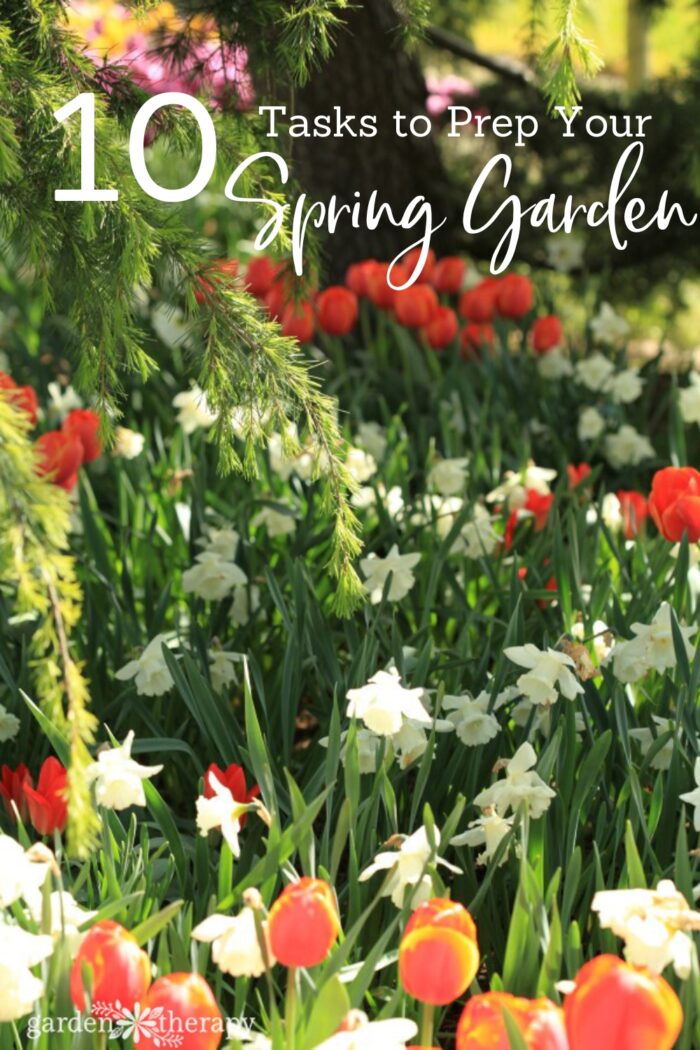
How to Prepare Your Spring Garden
While I say this about practically every season, I do think spring is my favourite time of year. There is SO much excitement when it comes to springtime. By then, we’re tired of the cold and snow (or if you’re like me, the rain!) and ready for some spring weather and gardening.
The best part about spring is witnessing the transition of hibernation to new growth. All winter I’ve been dreaming up my plans for the next season’s garden and I’m itching to get outside and garden again. Before there are new greens or spring bulbs, there are a few tasks that we can cover to get ready for spring, even if spring isn’t quite ready for you!
1. Inspect Raised Garden Beds
Check garden beds for any damage. Over the winter, soggy soil from rain and snow can put a strain on the wood frames of a raised garden bed. You want to make sure all your beds are structurally sound and ready to house plants and soil. To do so, repair any bowed or split wood on the frames.
2. Check Your Garden Tools
Like you, your garden tools have patiently been waiting for the next gardening season. Get your garden tools in tip-top shape before the planting season gets in full swing. Give them a good wipe down and inspect for rust on the tool heads.
If rusty, soak the tool in 50% water and 50% vinegar. Then, give them a good scrub with steel wool. If your tools have wooden handles and are showing signs of splits and cracks, rub them down with boiled linseed oil.
3. Turn Your Compost
While your plants have been hibernating, your compost has been brewing. It’s time to turn your compost pile and check for any that is ready to use. Making your own compost is one of the best natural soil amendments and it’s free!
Add compost to improve the soil by scratching in finished compost into the top one inch of soil. This will give your soil plenty of nutrients to house new seedlings.
4. Top Dress Garden Beds
If you run short of home-grown compost, you can still give your soil a nutrient boost. Use well-seasoned manure to top-dress your garden beds in preparation for planting. If you planted a winter cover crop, now is the time to till it into the soil in preparation for planting the beds.
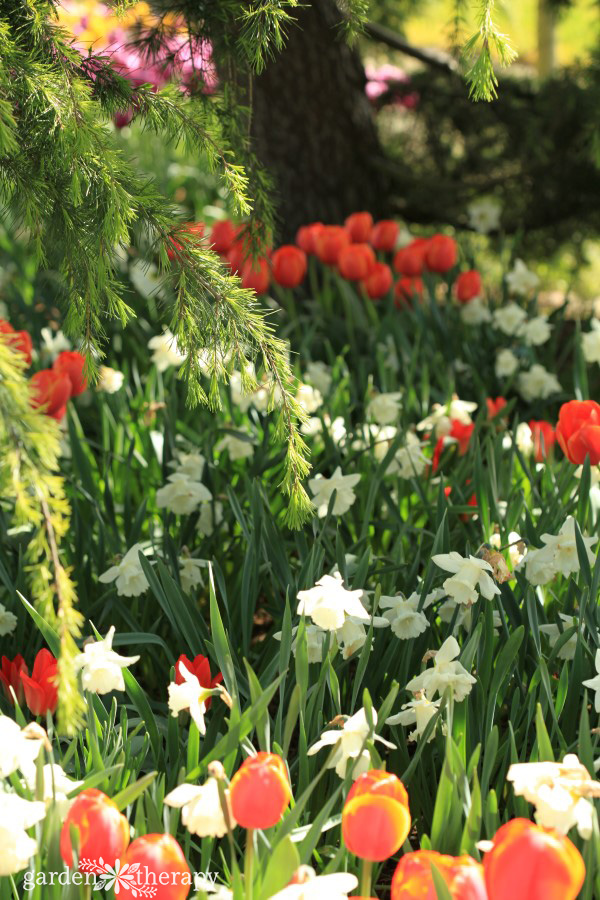
5. Divide Perennials
If you’re like me, you have spent the winter dreaming up a new garden plan or map. Spring is a great time to transplant divisions or move plants around. If you don’t have room for your new divisions or want something new, share or trade some of your plants with neighbors and gardener friends.
This is a cost-efficient way to add more plants to your landscape, but be mindful of sharing pests, disease, and weeds. Only share plants from your garden that are healthy and inspect plants from friends or plant sales thoroughly. If there are any signs of distress or discoloration, do not plant it in your garden. The risk often far outweighs the reward!
6. Weed and Mulch
Eradicate those pesky early spring weeds before they get too comfortable in your garden. The key to successful weeding is to start early in order to stay on top of it. Remove any young, sprouting weeds first.
Next, put down a layer of cardboard or landscape fabric onto the bare ground before you add mulch. A three to four-inch layer of mulch is sufficient to discourage any new weed growth. Alternatively, you can plant your garden tightly with perennials, annuals, trees, and shrubs to crowd out weeds. More plants the better, right!
7. Seed Starting
Seed starting may be one of the most exciting spring garden tasks. Seeing new sprouts germinate and rise from the soil definitely brings me a little dopamine hit. Not all seeds will begin at the same time, so be sure to check their packet for growing timelines.
I like to sow warm-weather vegetables and annuals indoors before the last frost date. To aid in germination, pre-soak larger seeds and seeds with thick coats such as beets and nasturtium the night before you sow them in starter pots.
Seed starting is a gardening art form and there is a lot to cover on this topic. For more on how to start seeds both indoors and out, check out The Ultimate Seed Starting Guide.
8. Early Spring Vegetables
You may not have to wait long to plant some of your vegetables! Once the soil is workable, direct sow any early spring vegetables. Cool-weather veggies like lettuce, cabbage, radishes and scallions will germinate in cooler soil.
With careful planning, you can have vegetables in the spring, summer, and fall. Dedicate a section of your garden to speedy vegetables for harvest that you can turnover throughout the growing season.
9. Prune
Some people are scared to prune in the spring because they are unsure whether or not a branch is dead or still hibernating. The key is to do so after new growth has begun and not beforehand.
You will want to remove any dead branches from shrubs, trees, and perennial foliage. Prune the spring bloomers, like forsythia and rhododendrons, as needed soon after flowering is complete. Thin and shape hedges after the first flush of new spring growth.
10. Plan to Protect Seedlings
As much as we try to predict the weather, a late season frost or freeze can happen anytime in the spring. Make sure you have enough cloth and plastic to protect tender plants. If a frost is predicted, just a cloth over your plants will suffice. For nights when the temps are forecast to dip below freezing, it’s better to put a layer of cloth on first, then lay plastic on top. Condensation on the plastic can freeze and damage foliage.
You can also protect new seedlings with your own mini greenhouse. Check out my guide on how to utilize umbrella greenhouses for container gardening.
Taking the time to complete a few essential spring garden tasks will bring you benefits for the rest of the season. Plus, it just feels amazing to get back outside and dive deep into the garden!
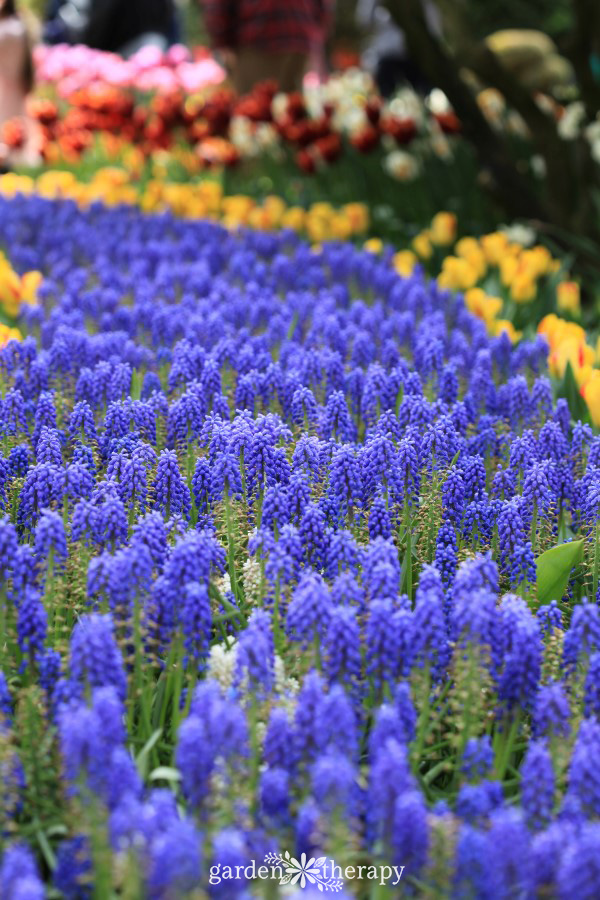

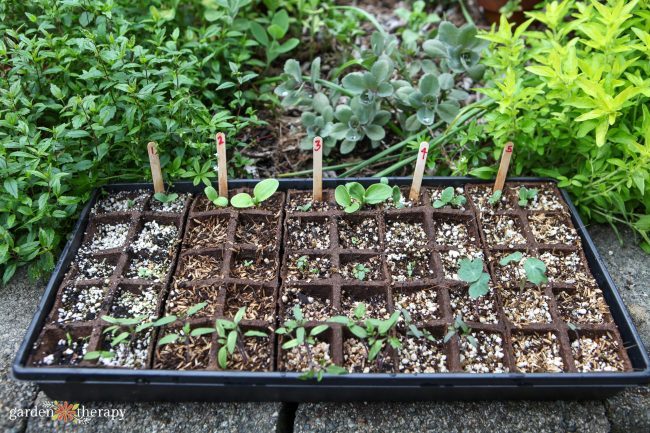
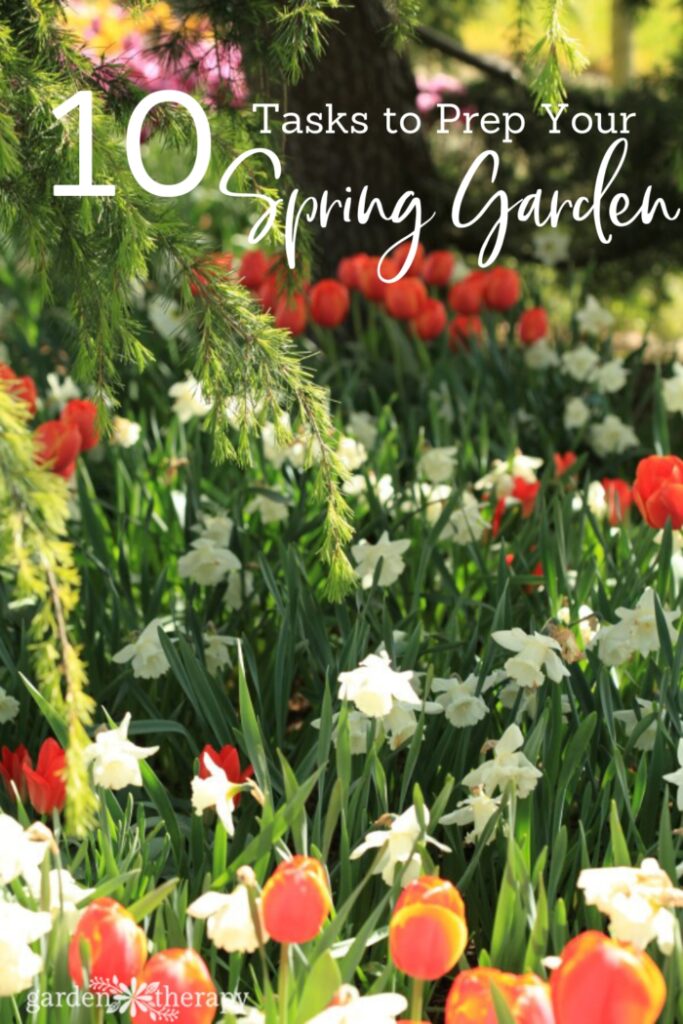



Hi
Great post!
I’m always looking forward to my spring garden.I have to agree, Spring is indeed a great time to transplant divisions and move plants around.
I’m looking for effective ways on how to start seed indoors, I will definitely check out The Ultimate Seed Starting Guide.
Thanks!
I always look forward to your emails with the pictures of beautiful flowers and great tips. Thank you for sharing.
Thank you, Rebecca, that is so nice to read!